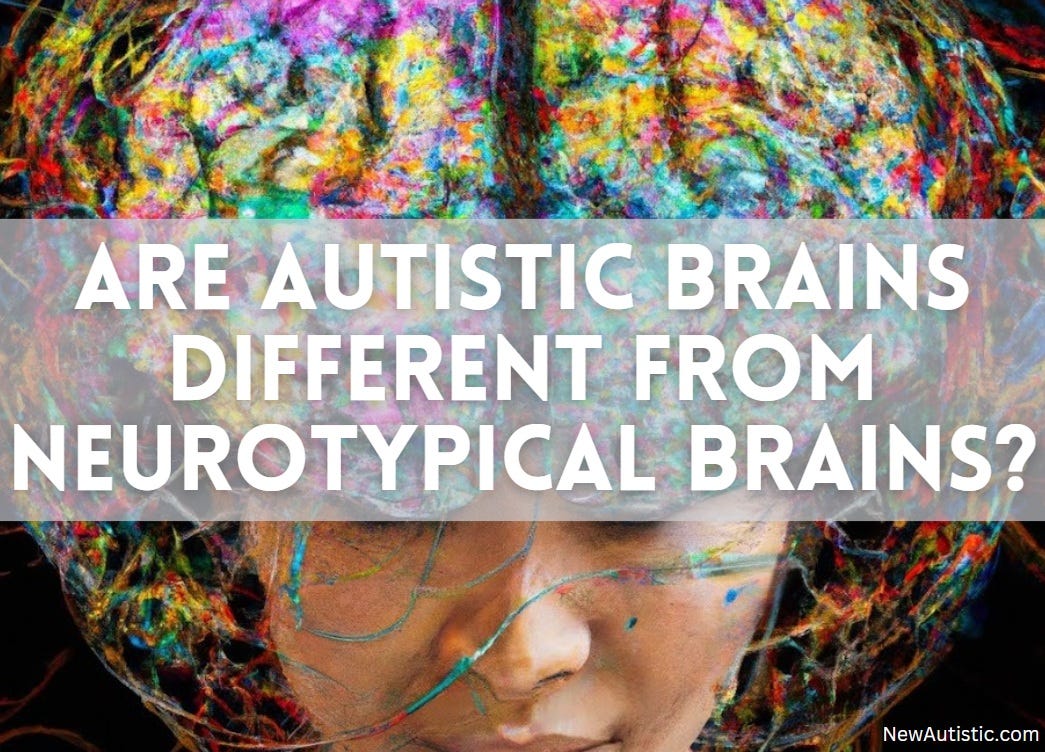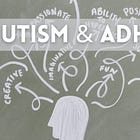Are Autistic Brains Different From Neurotypical Brains?
Turns Out “Wired Differently” Wasn’t Just a Metaphor
For decades, autism has largely been diagnosed based on observable behaviors (speech delays, repetitive actions, or social difficulties), often missing those who mask or whose traits are less pronounced. However, recent breakthroughs in neuroscience, research, and technology are reshaping how we understand autism — revealing it may not just be a difference in behavior, but a difference in biology itself.
Emerging research suggests that autistic brains aren't simply wired differently in a metaphorical sense; they’re literally structured differently with measurable variations in neuron density, brain symmetry, and information processing. In this article, I’ll explore the growing body of scientific evidence that autism is not just psychological or developmental, but deeply neurological as well.
Neuron Density Differences in Autistic Children’s Brains
Researchers at the University of Rochester published a 2024 study in Autism Research that compared over 9,000 individuals — some with autism, some without — to examine differences in neuron density in the brain. Results revealed that children with autism show distinct differences in neuron density in certain brain regions compared to both neurotypical children and those with other psychiatric conditions like ADHD and anxiety.
When the researchers broke down the brain scan measurements into two parts — one that shows how many neuron cell bodies there are (RNI) and one that shows how much the brain cells branch out (RND) — they got a clearer picture.
Examining the Results
Results from the study showed that individuals with autism had fewer neuron cell bodies in the:
parietal lobe (touch, spatial awareness, pressure, pain)
occipital lobe (vision, shapes, colors, movement)
midbrain (basic movement, visual and auditory reflexes)
hindbrain (balance, coordination, breathing, heart rate, other automatic body functions)
They also had fewer neuron branches in the cerebellum (coordination, balance, fine-tuning movement) and ventral diencephalon (relaying sensory information, controlling automatic body functions).
However, those with autism also had areas of the brain that had more neuron density, including more neuron cell bodies in the amygdala (which is important for emotions), and more neuron branches in the:
fronto-temporal regions (thinking, language, social skills, emotions)
caudate nucleus (movement planning, habits, repetitive actions)
insula (emotional awareness, bodily feelings, empathy)
putamen or basal ganglia (movement control, habit learning)
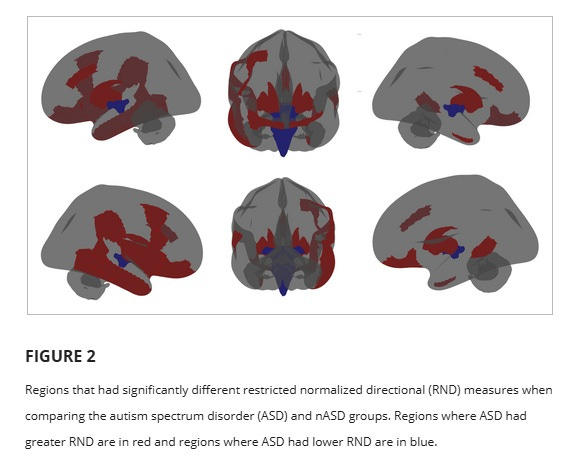
Basically, some parts of autistic brains have fewer neuron cells or branches compared to neurotypical brains, and other parts have more. These brain differences stayed the same even when the researchers compared people with autism to people with other mental health conditions, and when they checked the results at different times.
Differences in Brain Structure in Older Autistic Adults
A 2023 study published in Frontiers in Neuroscience found that adult men with autism have small but important differences in their brain structure compared to neurotypical men. Using a special type of MRI, researchers looked closely at the brain’s “gray matter” (which processes information) and “white matter” (which connects different brain areas).
Brains Built Another Way
The study looked at the tiny structures of the brain in autistic and neurotypical males aged 12 to 46 using advanced MRI scans. Researchers found clear differences in both the white matter and gray matter between autistic and neurotypical individuals. These brain differences stayed consistent across different ages. In autistic people, some of the brain changes were linked to how severe their autism symptoms were.
“We see significant differences between the two groups across both white matter and gray matter. There were also associations with some of the autism severity measures that were collected and looked at as well” (Doug Dean III, Ph.D.).
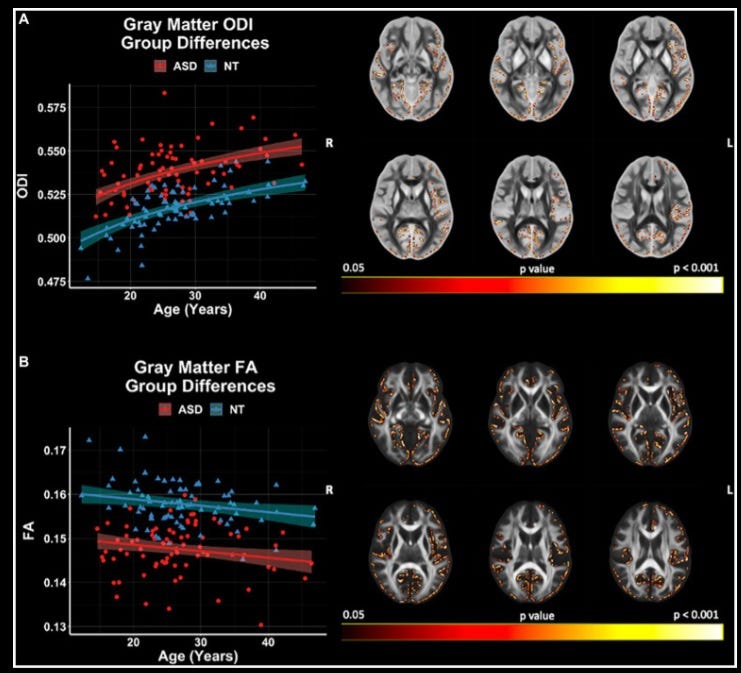
Although this study population was relatively small (around 150 individuals), it is still important because most autism research focuses on children, whereas this study highlights the importance of understanding how autism affects the brain in adults.
Autistic People Have Atypical Left-Right Brain Symmetry
In autism, the left and right sides of the brain don’t develop quite as evenly as they do in people without autism. It’s normal that there is some brain area size variation (known as brain asymmetry) in even neurotypical people, but in people with autism, this left-right difference is smaller — and sometimes even reversed — in areas of the brain involved in thinking, emotions, and understanding others.
In a 2019 study, scientists looked at brain scans from a very large group (over 1,700 people with autism and over 1,800 without) and found that the biggest differences between autistic and neurotypical brains were in areas like the frontal lobe (important for decision-making and emotions), temporal lobe (understanding language and faces), and putamen (movement and habits).
“As we found altered asymmetry of various additional regions, our findings suggest broader disruption of lateralized neurodevelopment as part of the ASD phenotype. We note that many of the regions that showed significant case–control differences in asymmetry, including medial frontal, anterior cingulate, and inferior temporal regions, overlap with the default mode network (DMN)” (Postema et al., 2019).
The differences in brain asymmetry were small yet consistent across people, and they didn’t seem to be explained by age, gender, intelligence, or medications. This suggests that slightly unusual left-right brain development may be one of the identifiable features of autism, although more research is needed.
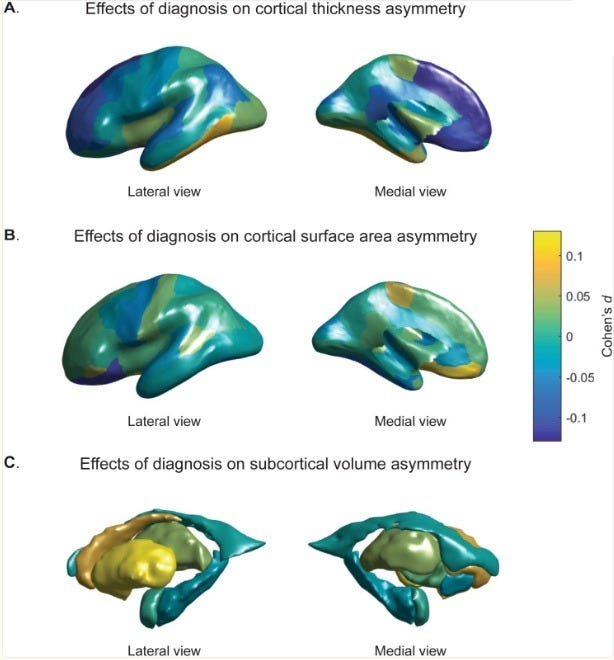
AI System Diagnoses Autism with 98.5% Accuracy
Researchers developed an artificial intelligence (AI) system in 2023 that can diagnose autism in children aged 2 to 4 years with 98.5 percent accuracy. Using a special type of brain scan called a diffusion tensor MRI (DT-MRI), the scan measures how water moves along white matter pathways in the brain, helping detect abnormal brain connections linked to autism. The AI system analyzes these pathways and compares them to typical brain patterns, identifying differences related to social and behavioral difficulties:
"DT-MRI captures these abnormal connections [in autistic brains] that lead to the symptoms that children with autism often have, such as impaired social communication and repetitive behaviors” (Gregory N. Barnes, M.D., Ph.D.).
When the DT-MRI scan was tested on 226 children, the system showed extremely impressive results: 97 percent sensitivity, 98 percent specificity, and an accuracy of 98.5 percent in identifying autistic children. Results like these suggest that there are quantifiable and measurable differences between neurotypical and autistic brains.
Autistic People Make More Consistent Choices and Rational Decisions
A 2017 study published in Psychological Science revealed that autistic people tend to make more consistent, logical decisions and are less likely to change their preferences based on the context of the choices they're given. This means they aren’t as easily influenced by tricks like adding a “decoy” option to sway their choice — a ploy that often works on neurotypical people. This also fits with past research showing autistic people focus more on individual details rather than the big picture.
“People with autism spectrum conditions made fewer context-induced preference reversals than did neurotypical individuals. That is, [autistic people] made more conventionally rational decisions” (Farmer et al., 2017).
Why Do Autistic People Tend to be More Rational?
Scientists hypothesize that autistic people are harder to sway from logical choices because they process information more directly without being as influenced by what others might think, or by their own past expectations. Some theories explain this as autistic people having “flatter priors” (ie. their brains rely less on previous experiences when making decisions and focus more on what’s right in front of them).
Granted, this particular study only had about 300 participants, but that’s still a sizable sample size and lines up with results found in multiple earlier studies. Results like these tend to point to the idea that autistic people have a different way of thinking compared to neurotypical people.
Autistic People Have Unique Mental Imagery Abilities
A smaller (82 participants) 2024 study published in Autism Research found that autistic people have atypical mental imagery abilities — that is, autistic adults have some differences in how they use mental imagery compared to non-autistic people.
In tasks where participants had to create or rotate mental images, autistic and non-autistic participants performed about the same. However, autistic people were better at holding visual patterns in their minds, showing stronger image maintenance. Additionally, when participants had to mentally scan an image, non-autistic people took longer when scanning farther distances, but autistic people stayed equally fast no matter how far they scanned.
“Results from the visual pattern test evidenced a greater ability to maintain mental images in autistic individuals… In summary, our findings support the hypothesis of typical or superior mental imagery abilities among autistic individuals” (Bled et al., 2024).
These findings suggest that mental imagery in autism works differently than in neurotypical brains and may rely more on direct perception rather than being shaped by language or prior knowledge.
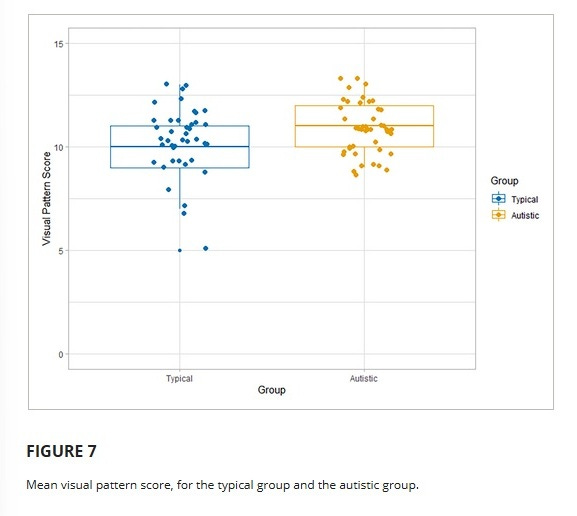
Video Game Distinguishes Children with Autism
A 2025 study published in the The British Journal of Psychiatry shows that a video game method can distinguish autistic kids from neurotypical kids with an astonishing 80 percent success rate. It can also distinguish autistic kids from ADHD kids with a 70 percent success rate — very impressive, especially considering the high degree of overlap between autism and ADHD. (To read more about the autism/ADHD overlap, check out my article Autism & ADHD: The AuDHD Among Us.)
The video game method, known as a Computerized Assessment of Motor Imitation (CAMI), records a child’s movements as they mimic an on-screen character. CAMI then scores the child’s imitation ability, which correlates strongly with autism symptoms like social difficulties and repetitive behaviors.
“Four levels of analyses confirm that poor imitation measured by the low-cost and scalable CAMI method specifically distinguishes ASD not only from neurotypical development, but also from commonly co-occurring ADHD” (Santra et al., 2025).
Easy Assessment Option for Children
Unlike traditional autism assessments that focus on communication, CAMI targets sensory-motor challenges, revealing differences between autism and ADHD. More research is needed (as the study included less than 200 children), but CAMI is a promising clinical tool for helping to distinguish autistic and/or ADHD children from their neurotypical peers.
While the potential use of CAMI to determine neurodivergent children isn’t definite proof of autistic and ADHD people having different brain structures, it certainly contributes to the hypothesis that they do.
Neurodivergence Isn’t Just in the Mind — It’s in the Matter
In summary, these studies point to a clear and compelling truth: autistic brains are not broken or deficient, but rather different in tangible, structural, and observable ways. From neuron density and structural asymmetry to decision-making styles and mental imagery, autistic individuals show consistent patterns that set them apart from neurotypical brains. These neurological signatures are helping scientists diagnose autism earlier, understand it better across the lifespan, and — perhaps most importantly — shift the narrative around autism and Autism Spectrum Disorder (ASD).
⬇️ What do you think about the research and studies? Let me and others know in the comment section below! ⬇️
Thanks for Reading!
Thanks for taking time out of your busy day to spend some time with me! I encourage all of my readers to RISE (Reflect, Improve, Strengthen, & Evolve) with me because healing is a lifelong journey; it’s not always easy, but it’s always worth it. You are loved, cherished, and valued. Don’t ever let anyone ever convince you otherwise.
My commitment to bringing you FREE, well-researched, and comprehensive content means I spend considerable time and effort writing each article or post without compensation.
Want to Support Me?
The simplest FREE way you can support me is by subscribing, sharing, or leaving a comment:
I believe in keeping my content accessible to everyone, without paywalls, because I know the work I do matters. For that reason, I’m beyond grateful for any financial support! If you'd like to support me and my work, check out my art website at AriesArtwork.com to bring home something unique or find a gift for that special someone in your life:
I’ll see you again when I’ve got a new info-dump for you, my Newtistics Crew!
—Skylar Aries



